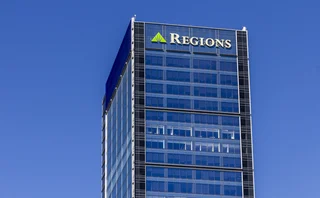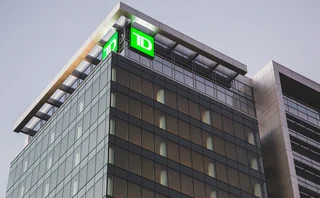

PacWest, Banc of California aim to slash emergency borrowings
Post-merger, the new regional lender could see wholesale funding fall from $16.2bn to $2.9bn
PacWest Bancorp and Banc of California plan to drastically cut their reliance on wholesale funding after merging, betting on their combined balance sheets’ firepower to pay down most of the costly borrowing that has enabled them to navigate through March’s crisis.
The two banks had a collective $16.2 billion in wholesale liabilities as of end-June, down from $21.1 billion at end-March but still two-and-a-half times the $6.5 billion figure reported at the end of 2022. The latest balance
Only users who have a paid subscription or are part of a corporate subscription are able to print or copy content.
To access these options, along with all other subscription benefits, please contact info@risk.net or view our subscription options here: http://subscriptions.risk.net/subscribe
You are currently unable to print this content. Please contact info@risk.net to find out more.
You are currently unable to copy this content. Please contact info@risk.net to find out more.
Copyright Infopro Digital Limited. All rights reserved.
As outlined in our terms and conditions, https://www.infopro-digital.com/terms-and-conditions/subscriptions/ (point 2.4), printing is limited to a single copy.
If you would like to purchase additional rights please email info@risk.net
Copyright Infopro Digital Limited. All rights reserved.
You may share this content using our article tools. As outlined in our terms and conditions, https://www.infopro-digital.com/terms-and-conditions/subscriptions/ (clause 2.4), an Authorised User may only make one copy of the materials for their own personal use. You must also comply with the restrictions in clause 2.5.
If you would like to purchase additional rights please email info@risk.net
More on Risk Quantum
Regions Bank swells HTM book to curb AOCI volatility
In strategic shift, bank aims to bolster HTM holdings to 25% of securities portfolio
US MMFs tilted from repo to cash USTs in November
Outright allocations captured growing share of funds’ record cash pile
JPM’s AFS holdings surge $72bn amid doubling unrealised losses
AOCI falls to its lowest in a year despite rate cuts
Member contributions propel six default funds to new highs
Skin in the game unchanged at four CCPs amid $3bn rise in default resources
BMO sets aside record C$1.5bn for loan losses
Net write-offs reach highest level in over two decades, exceeding early pandemic levels
Deutsche tops EU lenders in mid-2024 surge for bad CRE loans
German lender worst hit among bloc’s systemic banks as soured exposures rose 153% in 12 months
Estimated stressed losses rise at OCC, LCH and JSCC
New stress scenario boosts worst-case loss at Options Clearing Corporation by half
TD Bank’s annual op loss tab surges 144% amid AML settlement
US plea deal drives bank’s op RWAs to record C$120 billion








